Chatbots have completely changed the way consumers interact with businesses. Powered with artificial intelligence (AI) and machine learning, chatbots have learned to do much more than just answer questions. Businesses of all kinds harness the capabilities of chatbots to offer better service, communicate with customers and employees, and increase overall performance.
But does this mean that businesses can benefit only from smart chatbots? And does every business need to invest in an AI-based chatbot rather than a simpler rule-based bot?
In this article, you’ll learn all about these two types of chatbots and get expert advice on generative AI development. Our guide will be useful for business owners, CTOs, and CMOs who want to power their business or product with a chatbot.
Introduction to chatbots: benefits and use cases
Before discussing what’s best for your business, let’s start with defining what a chatbot is. Chatbots are software programs that simulate a human conversation in text or voice format, allowing people to talk to the chatbot as if it were a real person.
Nearly 40% of internet users worldwide prefer interacting with chatbots to virtual agents, and as their popularity increases, more sectors are adopting chatbots for both customer-facing and internal needs. According to Juniper Research, chatbots saved businesses across the retail, banking, and healthcare sectors 2.5 billion hours annually from 2018 to 2023.
Businesses use chatbots to ensure customer support and assistance outside working hours. A personalized and contextual chatbot can provide such accurate answers that no human aid is needed to solve most customer requests. This technology allows businesses to free their human staff to resolve more complex issues.
This versatility and cost-efficiency motivate businesses to integrate chatbots into their own websites, applications, and solutions.
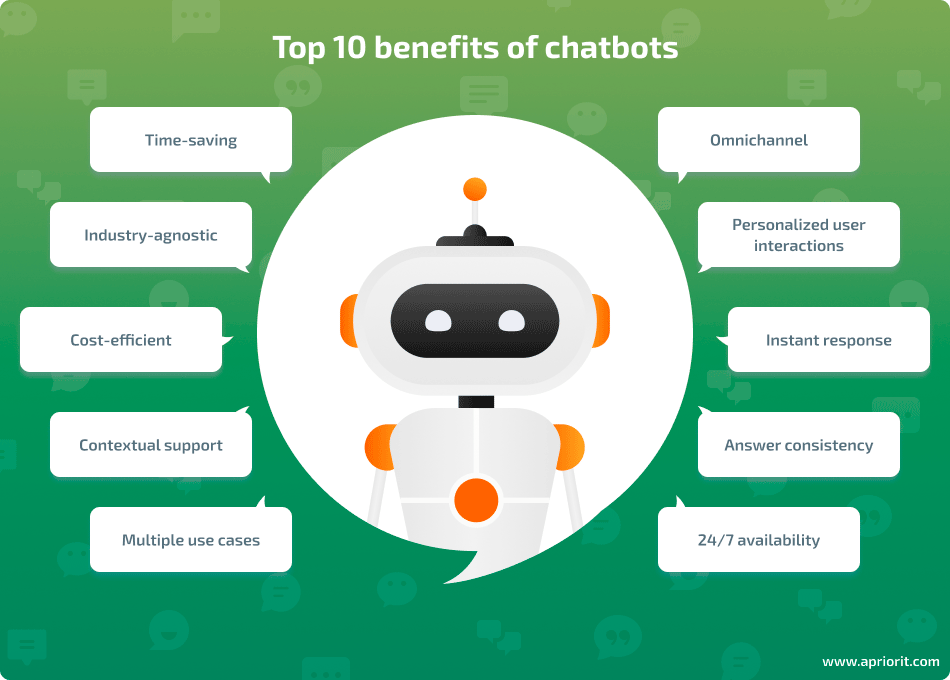
If you are considering building a chatbot for your business, think about what your unique needs are and what objectives the chatbot should meet. We’ll first cover what chatbots can offer for your business and then discuss the main ways to implement a chatbot (and which is best for your business).
Want to power your product with AI?
Leverage Apriorit engineers’ expertise to adopt cutting-edge technology in a cost-efficient and secure way.
Chatbot business applications
Chatbots open endless possibilities to almost any industry, from healthcare and e-commerce to logistics and finance. Businesses can leverage the power of chatbots to meet various needs, from customer support and order processing to marketing and entertainment.
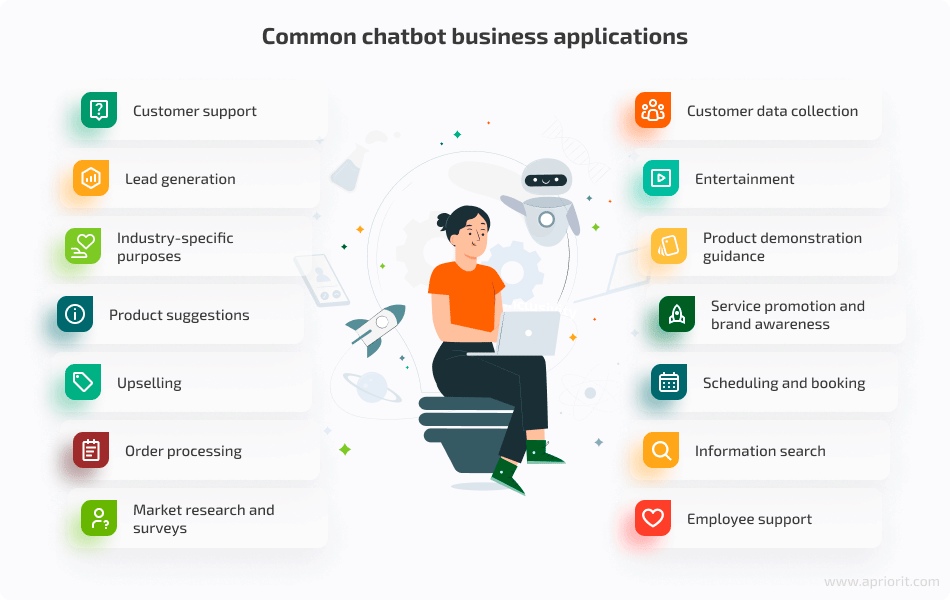
As you can see, chatbots are truly multifunctional and have dozens of uses, meaning they can be applied effectively in nearly all industries. Most chatbots are customer-facing, but you can also successfully implement them internally for HR or IT support purposes.
You probably already know what you need a chatbot for, whether it’s optimizing customer support or promoting your service. Let’s now discuss how to choose the most appropriate implementation approach and technology for your idea.
Two main approaches to chatbot implementation
Chatbots can vary in their complexity: simple bots provide short answers to set questions, while advanced chatbots can hold a conversation with unpredictable and complex queries. This difference between rule-based and AI chatbots lies in their complexity. It determines the chatbot’s architecture and technology stack.
Let’s start by exploring types of chatbots based on their technical logic and architecture.
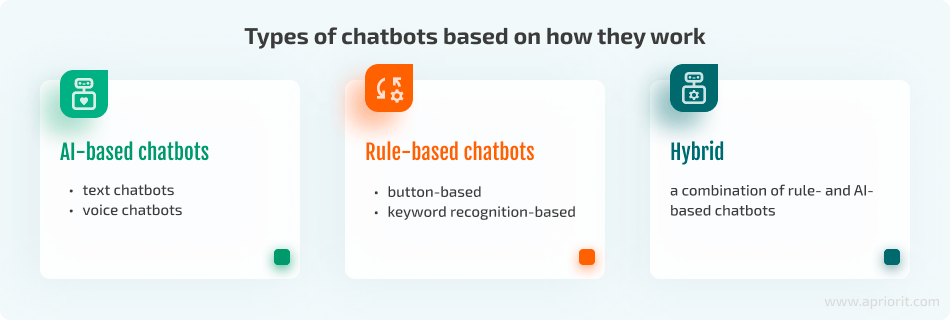
AI-based chatbots
AI-based chatbots, also known as conversational AI chatbots, are complex programs that imitate a natural human conversation and can recognize queries regardless of their wording. Such bots can be based on a wide range of AI algorithms that allow them to comprehend human speech, learn during the conversation, and come up with relevant answers based on vast datasets.
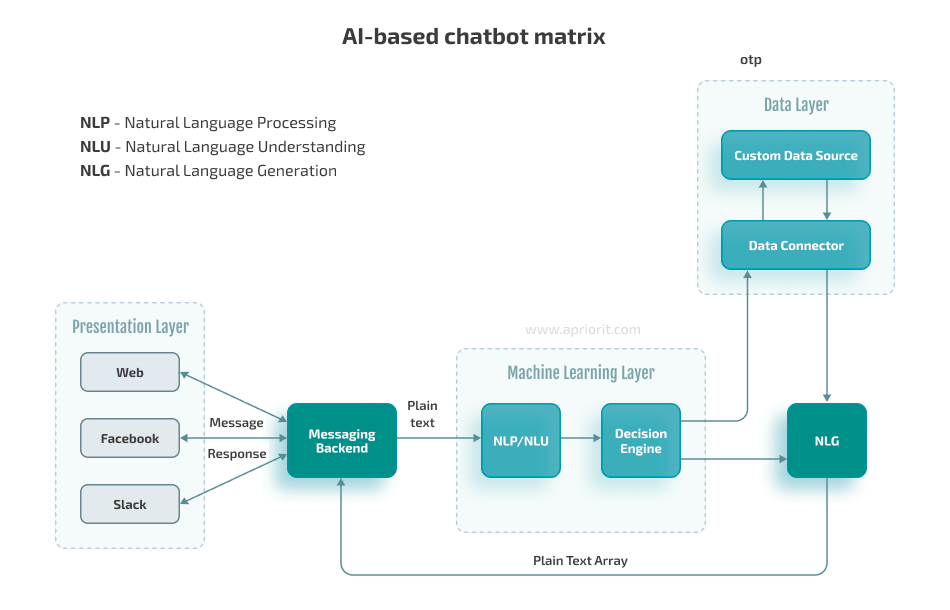
Depending on the type of interaction, AI-based chatbots can be divided into two groups:
- Text chatbots
- Voice chatbots
Some chatbots, such as Google Assistant, Amazon Alexa, and Siri, combine these two types, allowing both text and voice input.
One of the most prominent examples of conversational AI today is ChatGPT from Open AI. It is able to recognize natural human language and provide relevant, comprehensive answers, perform calculations, write code, and assist users with almost any request. ChatGPT is applicable to many industries, including healthcare, education, tourism, e-commerce, and finance.
At Apriorit, we use various approaches to human language processing to build AI-based software, including:
- Natural language processing (NLP)
- Machine learning (ML)
- Natural language generation (NLG)
- Automatic speech recognition (ASR)
- Dialog management (DM)
- Deep learning (DL)
The main advantages of AI-based chatbots are:
- Enhanced and personalized customer experience
- Self-learning and adaptation
- Ability to handle complex queries and unlimited interaction scenarios without the need for manual updates
- Relevant, human-like answers
Among the disadvantages of AI-based chatbots are:
- Cost of implementation
- Technical complexity
- Privacy concerns
- Need for constant monitoring and fine-tuning
AI chatbots offer businesses a competitive edge by providing highly personalized interactions and valuable data insights. Despite the need for initial investment and technical challenges, their ability to enhance the customer experience, scale operations, and drive revenue makes them great for business growth.
Let’s now talk about rule-based chatbots and their sub-types.
Read also
Top LLM Use Cases for Business: Real-Life Examples and Adoption Considerations
Find out how you can benefit from large language models and what to consider before adopting them.

Rule-based chatbots
Rule-based chatbots are simpler than AI-based chatbots, as they use predefined scripts to answer particular questions. Rule-based chatbots can’t comprehend a natural conversation, but they can follow a rule-based matrix to guide users to a specific action or information.
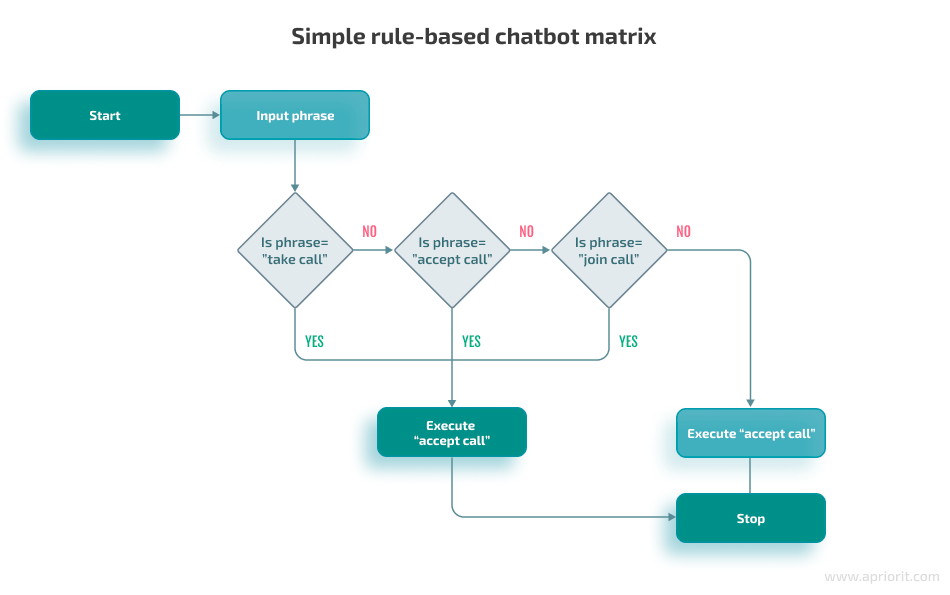
What is a rule-based chatbot in terms of communication methods? Unlike AI-based chatbots, customers can communicate with rule-based chatbots only via text. Rule-based chatbots don’t support voice recognition, as that requires advanced technologies like AI and ML.
There are two categories of rule-based chatbots:
- Button or menu-based chatbots offer users a list of predefined questions to choose from and provide corresponding answers. This puts strict limits on a conversation, so these chatbots are often used for the most basic customer support.
- Keyword recognition-based chatbots allow users to write their own questions and recognize keywords within those questions that trigger corresponding answers. Keyword recognition chatbots can provide irrelevant answers if keywords are phrased differently from what’s predefined in the database.
Let’s take a look at the pros and cons of rule-based chatbots.
The main advantages of rule-based chatbots include:
- Ease of implementation and integration
- Low cost of implementation
- Tight control over data, and, consequently, more security
- Ability to handle generic questions and take the load off human support
Among the disadvantages of rule-based chatbots are:
- Inability to learn on their own
- Linear conversations and limited requests
- More frequent irrelevant answers to customers’ questions
- Only manual updates and improvements or additions to current scenarios
Overall, rule-based chatbots are relatively simpler and more cost-effective than AI-based chatbots, allowing businesses to provide basic support, answer frequently asked questions, share news, or collect contact information without any human participation.
Let’s now compare AI and rule-based chatbots side by side to help you determine which is best for you.
If you can’t choose between these two options, you can consider a hybrid chatbot that combines elements of both types. Let’s talk about hybrid chatbots in detail.
Hybrid chatbots
Hybrid chatbots are a combination of rule-based chatbots and AI-powered chatbots. They leverage the strengths of both approaches to create a more versatile and efficient conversational experience.
Hybrid bots cover both generic queries and complex issues in one place: the rule-based component handles routine inquiries like order status checks, return policies, and frequently asked questions. Meanwhile, an AI component understands complex and context-based queries, learns during the conversation, and references past interactions to provide the most relevant answers.
An example of such a chatbot is Amtrak’s Julie Virtual Assistant — a hybrid chatbot from a national railway service in the US. Its rule-based scripts handle common questions on ticket reservations, refunds, train schedules, and so on. In addition, it uses AI and NLP to answer complex queries about matters such as multi-city itineraries.
Now that we’ve discussed different types of chatbots by their architecture and application, let’s find out which type of chatbot is best for your business.
Related project
Building AI Text Processing Modules for a Content Management Platform
Discover how the Apriorit team helped our client’s content management platform stay competitive by implementing AI modules that allowed end-users to translate, generate, and format text.

Rule-based vs AI chatbots: which to choose for your business
Choosing a chatbot may be a challenge considering the number of solutions on the market. Rule-based chatbots are easy to implement and are popular among businesses of all sizes. AI-based chatbots are more advanced, but does your business necessarily need one? Here’s a brief comparison of these two chatbot types.
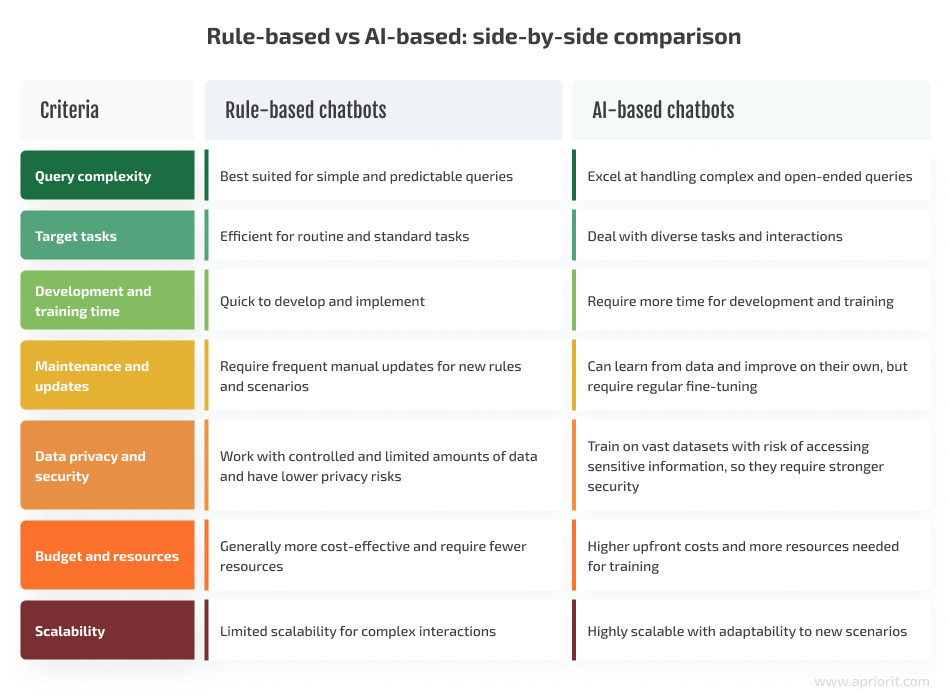
Now, let’s explore the checklist we usually use at Apriorit to help our clients choose between rule-based and AI-based chatbots.
1. What are your business requirements and target tasks?
Think about what tasks you want your chatbot to execute and what customer issues you’d like to solve. If you’d like to take a load off your human support and handle simple FAQs and queries, a rule-based chatbot will be more than enough. It’s also great for collecting customer data for further support or marketing.
However, if you’d like your chatbot to tackle complex tasks like building multi-destination trips or suggest products based on highly detailed personal requests, an AI-based chatbot will be a more suitable option.
2. How much time and how many resources can you budget for development and training?
AI-based chatbots require more time and resources for the initial development and training of their AI models. They need access to substantial data to learn and computing resources to process vast datasets. More and more companies like Reddit and X (formerly Twitter) are planning to close off their APIs to data scraping, which is what allows AI models to get unlimited amounts of training data. This means that you should consider an additional budget to train your AI-based chatbot.
Rule-based chatbots, on the other hand, are quicker to implement as they rely on predefined decision trees. These rule-based chatbots are often more cost-effective, requiring resources only for their development and further support. If you want to implement an AI-based chatbot, make sure to account for training and development time in your budget.
If you’d like to implement a chatbot quickly and test how your audience responds, a rule-based chatbot can be a good option. However, if you plan to handle more complex tasks with your chatbot, be ready to invest more time and resources into AI model development and training.
3. Are you ready to add new scenarios manually, or do you prefer self-learning bots?
Both AI-based and rule-based chatbots require maintenance and updating. While AI-based chatbots need constant monitoring and fine-tuning for more accurate responses, rule-based chatbots require regular updates and improvements.
Each time you want to add new scenarios or rules, you’ll need to update a rule-based chatbot manually. AI-based chatbots, on the other hand, learn on their own, both from datasets and user interactions, so there’s no need to add new scenarios.
Also, as the number of possible scenarios and user interactions increases, maintaining and updating a rule-based chatbot can become challenging and time-consuming.
In comparison, AI-based chatbots offer greater scalability. They can handle a wider range of queries, making them suitable for businesses with diverse customer interactions.
Read also
Can You Rely on GPT-3 in AI Development Projects?
Discover the pros and cons of using GPT-3 for building AI-powered solutions, and explore examples of using OpenAI’s tool with Python.

4. Does your business have critical data privacy and security requirements?
As a company with 20 years of cybersecurity experience and AI expertise, we can say that AI-based chatbots require greater cybersecurity efforts. AI models need to use large amounts of data for training and improving responses, so such chatbots raise privacy and security concerns, as the data used can potentially contain sensitive information provided by end users.
Unlike AI-based chatbots, rule-based bots are inherently more secure, as they don’t use as much data.
If your business handles lots of sensitive user data, a rule-based chatbot may be a safer option, as it can provide more control over what data you collect and use. On the other hand, if your business needs require an AI-based chatbot, make sure you put extra effort into its security. For example, you’ll need to conduct regular audits to make sure your chatbot is compliant with data privacy regulations like the GDPR or other compliance requirements depending on your region of operation.
For example, to ensure security and data privacy for AI-based chatbots, at Apriorit we:
- ensure secure data handling and adherence to regulations, laws, and standards
- encrypt user data
- inform users about how their data is collected and used
- perform regular audits and compliance checks
- redact sensitive data and personally identifiable information (PII)
In conclusion, we recommend an AI-based chatbot if you expect a wide range of varied user inputs, or if personalization and ensuring a great user experience are your highest priority. Before delving into AI chatbot development, make sure you have sufficient resources to not only train your model but also to support and maintain it after deployment.
Choose a rule-based chatbot if you want a cost-efficient aid for your human support that will be available 24/7 to answer predefined questions and standard queries. Rule-based chatbots are great for businesses that deal with sensitive user information or data privacy concerns, as they don’t involve extensive data processing or machine learning. This option will be great for businesses with specific domain knowledge or niche industries that can tailor a rule-based chatbot to their specific requirements, even with limited capabilities.
Read also
How to Develop Smart Chatbots Using Python: Examples of Developing AI- and ML-Driven Chatbots
Discover how to optimize your business with smart chatbots. Explore two ways of developing chatbots with Python tools.
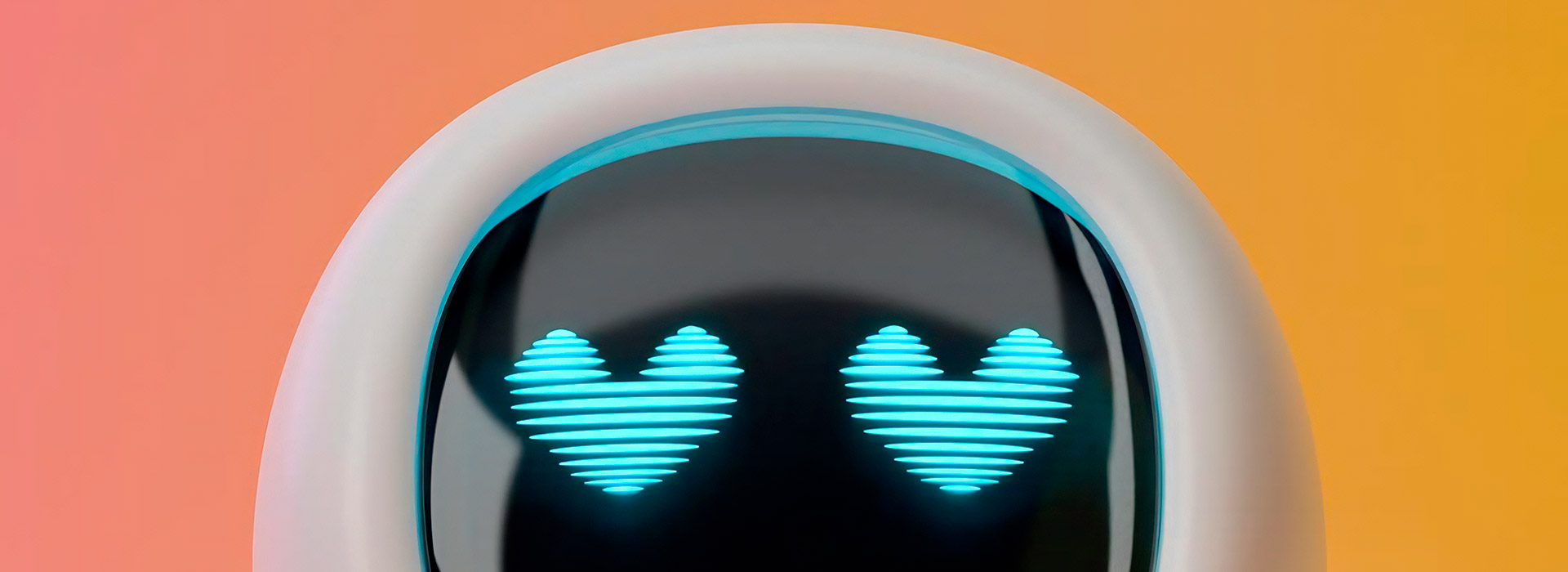
Conclusion
Choosing AI-powered or rule-based chatbot technology is a crucial decision for businesses looking to enhance customer engagement and streamline their operations. Each technology offers unique advantages depending on your business needs.
Rule-based chatbots are well-suited for handling routine and straightforward interactions, while AI-based chatbots provide a more personalized and engaging user experience.
At Apriorit, our team of experts specializes in secure chatbot development, ensuring that your chatbot is not only efficient but also safe from potential vulnerabilities. With our in-depth knowledge of data privacy requirements and industry best practices, we can help you build a highly secure and scalable chatbot that will allow you to boost sales, improve the user experience, and automate customer support.
Looking for ways to benefit from AI technologies?
Get an expert Apriorit team who can implement the most suitable AI and ML models in your product to make it efficient, performant, and competitive.



